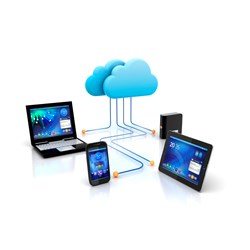Cloud-Centric Acute Care Platform Marks eClinicalWorks Entry Into Acute Care Market

By Christine Kern, contributing writer

Tidelands Health partnership connects in-patient, out-patient, and allied health settings.
eClinicalWorks is marking its entry into the acute care market by partnering with Tidelands Health to create a cloud-centric platform, eClinicalWorks 10i.In brief, the cloud-centric platform creates a unified record across in-patient, out-patient, and allied health settings.
The product is currently being developed in partnership with eClinicalWorks customerTidelands Health, a healthcare organization made up of three hospitals with approximately 300 beds and more than 40 outpatient locations, and the new platform will be available in 2017.Portions of the new technology will be debuted at HiMSS 2016, according to Healthcare IT News.
The initial release of the acute care platform will focus on enterprise operations functionality, including inventory management, support for emergency and operating rooms, analytics, computerized physician order entry (CPOE), and bed management.
While this is the first foray into the acute care market, eClinicalWorks already has established ambulatory products along with success internationally, where it has deployed technology within approximately 80 hospitals. This cloud-based solution will require a lower total cost of ownership than the industry standard, while delivering a more transparent view across care settings.
“We’ve got a lot of ambulatory clients that use our product that believe the way we’ve worked with them with cloud computing health records is lacking on the inpatient side,” Girish Navani, CEO and co-founder of eClinicalWorks, told Healthcare IT News. “They also say the current state of acute care technology is very different from ambulatory, and that it costs too much. Client/server is a very rigid system that does not cater to a model of care delivery that requires both agility and speed. And usability is a question, with many acute care products looking like they were developed 30 years ago.”
“Acute care processes, including EHR functionality, are prime targets for re-engineering for most hospitals, but such efforts are limited by the flexibility of existing EHR products installed at most U.S. hospitals,” said Judy Hanover, research director of Provider IT Transformation for IDC Health Insights. “A cloud-based acute care EHR would allow organizations to concentrate on workflows and efficiency in clinical delivery, while supporting process re-engineering with digital workflows. This industry is ripe for a new approach.”
